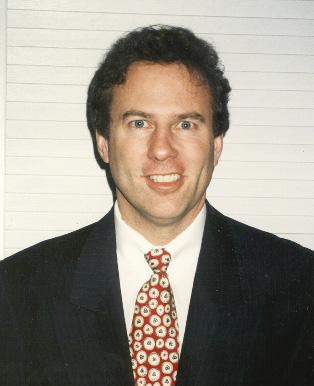Fixed Wireless Broadband: Nirvana for Cord-Cutters

In late 2017, after two years of research, analysis and writing, The Carmel Group published the first in-depth report about what we term the Broadband Wireless Access, or “BWA,” industry. Many traditionalists still call it the fixed wireless industry. The full 23-page “2017 BWA Report” is available for download here.
Yet, the lack of industry interest in the story and data behind the “2017 BWA Report” appears to say a lot about yesterday’s and today’s multichannel industry.
What BWA Means
For those unaware, BWA means the delivery of broadband Internet, via a tower and wireless spectrum, to small radio antennas mounted on the sides of buildings. The outside antenna connects to a router inside the structure. The router then distributes the signal to devices and monitors inside the home or business.
For the cord-cutting generation, BWA is Nirvana, because it delivers Netflix, Apple TV, Amazon and YouTube for a tiny fraction of the cost of a cable TV, telco, fiber or satellite package. BWA also delivers quality Voice Over Internet Protocol (VOIP) telephone services. Traditional TV packages are not far off, we believe.
For the operator, it means delivering much of what people – especially younger generations – really want from video, at a tiny fraction of the cost and payback period.
Related: Fixed Wireless Pay TV: Understanding the New DNA
For cable, telco, fiber and satellite, BWA can also mean a chance to meld with and become a hybrid video delivery service, with obvious advantages. Indeed, this melding highlights the meaning behind the name of this blog, “Mixed Signals” (meaning, increasingly, silos break down and each industry combines with – and invests in – the others).
A First Call
On March 19 I received one of the first of its kind: a call from a Detroit-based investment firm that was interested in purchasing a BWA operator of several thousand subscribers, with decent multiples and very respectable cash flow, the partner said. The guy said to me, “This business seems almost too good to be true.”
His core questions centered around items such as the research and study behind the data points, the validity of the methodology, the competition and concerns about the future.
He was also concerned about how cable and telco will react, especially as new 5G technology and the BWA industry grow out. He worried further about a possible dearth of future unlicensed spectrum.
Why Not More?
What has occurred to me weekly since the “2017 BWA Report” came out five months ago -- and what triggered this article -- is something I saw quite a bit when I left Paul Kagan Associates in 1995 to start a rival telecom research operation (but mine focused in the beginning just on the newly emerging Direct Broadcast Satellite industry). That phenomenon was the real lack of serious interest by cable, other related industries and investors in a new technology and new business that challenges the old.
Today, because of the comparison of a handful of important technological and political concerns to those of DBS back in the early 1990s, the BWA industry is on the verge of a similar breakout. (Note that I’m not yet predicting the growth that DBS saw, reaching close to 30 million subscribers in a 20-year time frame, but the BWA industry is projected to nearly double to over eight million subscribers in five year’s time.) BWA is also on the verge of competing mightily with cable.
Yet, despite that promise, there is still very little interest from both within and outside the BWA industry in what the real BWA story is.
Know Your Friends Well
Some say the reason for this dearth of response is a lack of curiosity.
That may be true at a certain level, but I believe that the more important reason is one of fear.
Incumbents are often afraid to address the idea of a future involving a large loss of market share – as was cable with DBS in the 1990s, and cable is today with other technologies, including BWA. In response, they do little or not enough to address that future. I’ll never forget the first time I heard the adage “Know your friends well, your enemies better.”
Interestingly enough, the two companies that have purchased the answers and the data behind the BWA survey data we did are both based overseas. They both mentioned a unique opportunity to invest in and take advantage of a new U.S. (and global) telecom opportunity, involving new spectrum gains, new technology, new equipment and new investors.
Thus, I must again ask the U.S. contingent (and others of the foreign ilk), yet this time in a more complete version: Suffer, Curiosity? Suffer, Fear? Suffer, Knowledge? Suffer, Advantage?
Like DBS, there’s a real chance here not only to benefit financially, but also to improve the quality of life for millions of Americans and other global citizens.
Jimmy Schaeffler is chair and CSO of The Carmel Group, a streaming/broadband, broadcast and pay TV/video consultancy based in Carmel-by-the-Sea, Calif.
The smarter way to stay on top of the multichannel video marketplace. Sign up below.
Jimmy Schaeffler is chairman and CSO of The Carmel Group, a nearly three-decades-old west coast-based telecom and entertainment consultancy founded in 1995.

